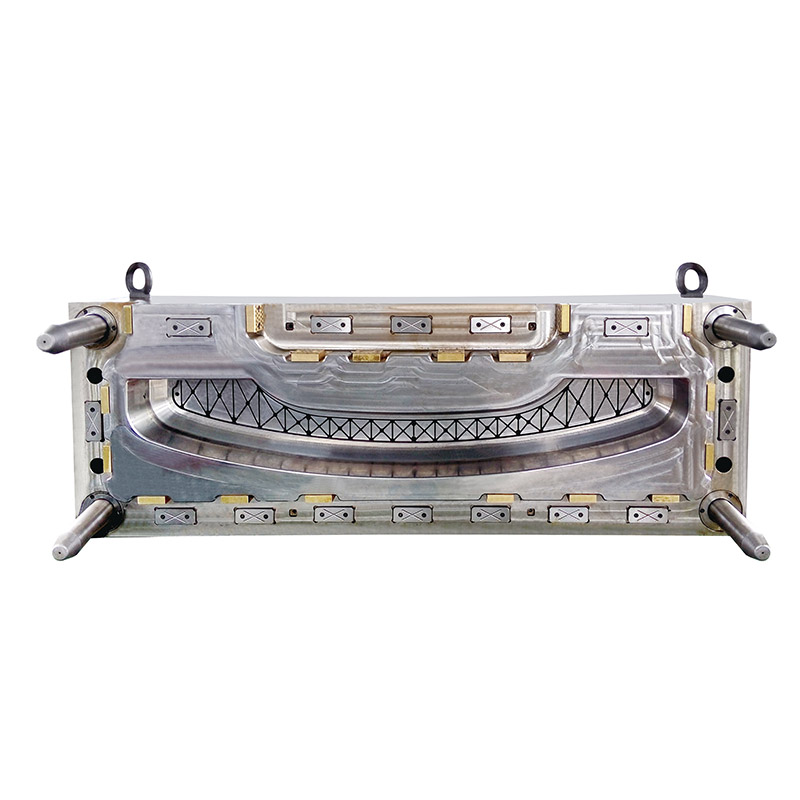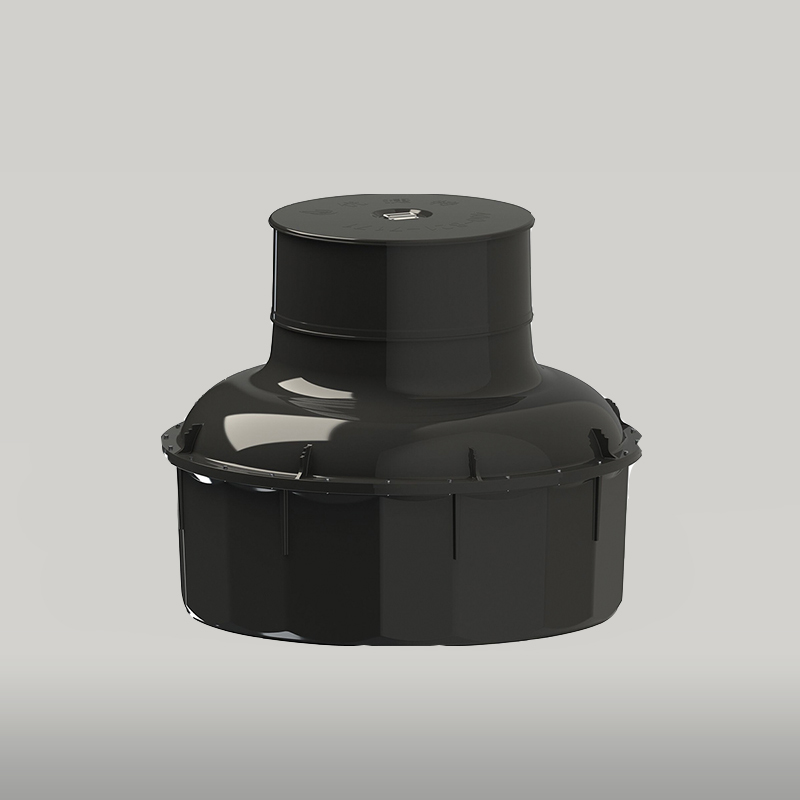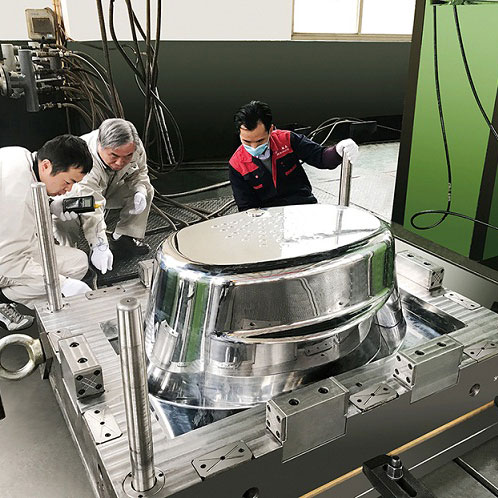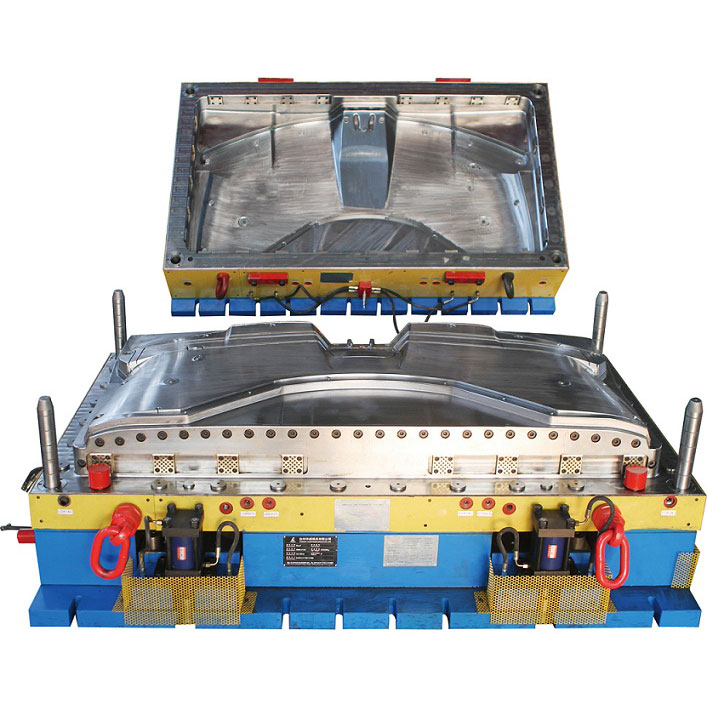Mold forming refers to the production of parts and products by making and using molds. Mold molding can be divided into several different types, compression molding, injection molding, extrusion molding, injection molding, hollow molding, die-cast molding, etc.
(1) Compression molding
Commonly known as press molding, it is one of the earliest methods of forming plastic parts. Compression molding is to add plastic directly into an open mold cavity with a certain temperature, and then close the mold. Under the action of heat and pressure, the plastic melts and becomes a flowing state. Due to physical and chemical effects, the plastic hardens into a plastic part with a certain shape and size that remains unchanged at room temperature. Compression molding is mainly used for molding thermosetting plastics, such as phenolic molding powder, urea-formaldehyde and melamine formaldehyde molding powder, glass fiber reinforced phenolic plastics, epoxy resin, DAP resin, silicone resin, polyimide, etc. It can also mold and process unsaturated polyester mass (DMC), sheet molding compound (SMC), prefabricated monolithic molding compound (BMC), etc. Generally speaking, compression molds are often divided into three categories: overflow type, non-overflow type, and semi-overflow type according to the matching structure of the upper and lower molds of the compression film.
(2) Injection molding
The plastic is first added to the heating barrel of the injection machine. The plastic is heated and melted. Driven by the screw or plunger of the injection machine, it enters the mold cavity through the nozzle and mold pouring system. It is hardened and shaped due to physical and chemical effects to become injection molding. products. Injection molding consists of a cycle consisting of injection, pressure holding (cooling) and plastic part demoulding processes, so injection molding has cyclical characteristics. Thermoplastic injection molding has a short molding cycle, high production efficiency, and little wear on the mold by the melt. It can mold large quantities of plastic parts with complex shapes, clear surface patterns and markings, and high dimensional accuracy; however, for plastics with large changes in wall thickness, parts, it is difficult to avoid molding defects. Anisotropy of plastic parts is also one of the quality problems, and all possible measures should be taken to minimize it.
(3) Extrusion molding
It is a molding method that allows plastic in a viscous flow state to pass through a die with a specific cross-sectional shape under high temperature and a certain pressure, and then shape it into a continuous profile with the required cross-sectional shape at a lower temperature. The production process of extrusion molding includes preparation of molding materials, extrusion shaping, cooling and shaping, pulling and cutting, and post-processing of extruded products (tempering or heat treatment). During the extrusion molding process, pay attention to adjusting the temperature of each heating section of the extruder barrel and the die die, screw rotation speed, traction speed and other process parameters in order to obtain qualified extrusion profiles. Special attention should be paid to adjusting the rate at which the polymer melt is extruded from the die. Because when the extrusion rate of molten material is low, the extrudate has a smooth surface and uniform cross-sectional shape; but when the extrusion rate of molten material reaches a certain limit, the surface of the extrudate will become rough and lose its luster. , shark skin, orange peel lines, shape distortion and other phenomena appear. When the extrusion rate is further increased, the extrudate surface becomes distorted and even detaches and breaks into melt fragments or cylinders. Therefore, control of the extrusion rate is crucial.
(4) Pressure injection molding
This molding method is also called transfer molding. It is to add the plastic raw materials into the preheated feeding chamber, then put the pressure column into the feeding chamber to lock the mold, and apply pressure to the plastic through the pressure column. The plastic melts into a flowing state under high temperature and high pressure, and enters the mold cavity through the pouring system. Gradually solidifies into plastic parts. Pressure injection molding is suitable for plastics that are lower than solid. Plastics that can be compression molded in principle can also be molded by injection molding. However, the molding material is required to have good fluidity in the molten state when it is lower than the solidification temperature, and has a larger solidification rate when it is higher than the solidification temperature.
(5) Hollow molding
It is to fix the tubular or sheet blank made by extrusion or injection and still in the plasticized state in the molding mold, and immediately introduce the compressed air to force the blank to expand and stick to the wall of the mold cavity. A processing method in which the desired hollow product is obtained by demoulding after cooling and shaping. Plastics suitable for hollow molding are high-pressure polyethylene, low-pressure polyethylene, hard polyvinyl chloride, soft polyvinyl chloride, polystyrene, polypropylene, polycarbonate, etc. According to the different parison molding methods, hollow molding is mainly divided into two types: extrusion blow molding and injection blow molding. The advantage of extrusion blow molding is that the structure of the extruder and extrusion blow mold is simple. The disadvantage is that the wall thickness of the parison is inconsistent, which can easily cause uneven wall thickness of plastic products. The advantage of injection blow molding is that the wall thickness of the parison is uniform and there are no flash edges. Since the injection parison has a bottom surface, there will be no seams and seams at the bottom of the hollow product, which is not only beautiful but also high in strength. The disadvantage is that the molding equipment and molds used are expensive, so this molding method is mostly used for mass production of small hollow products, and is not as widely used as the extrusion blow molding method.
(6) Die casting molding
Die casting is the abbreviation of pressure casting. The die-casting process is to add plastic raw materials into a preheated feeding chamber, and then apply pressure to the pressure column. The plastic melts under high temperature and high pressure, enters the cavity through the mold's pouring system, and gradually hardens into shape. This molding method is called die-casting. The mold used is called a die-casting mold. This kind of mold is mostly used for the molding of thermosetting plastics.

Mold molding is one of the important processes for manufacturing products made of various materials such as plastics and metals. In addition, there are foam plastic molding molds, glass fiber reinforced plastic low-pressure molding molds, etc.
Mold molding can be distinguished based on different material conditions, different deformation principles, different molding machines, molding accuracy, etc. Understanding the different forming methods will help you make the best choice in selecting the manufacturing process and avoid unnecessary losses caused by wrong choices.
 English
English
 English
English  ελληνικά
ελληνικά  Esperanto
Esperanto  Afrikaans
Afrikaans  tiếng Việt
tiếng Việt  Català
Català  Italiano
Italiano  שפה עברית
שפה עברית  Cymraeg
Cymraeg  العربية
العربية  Galego
Galego  Latviešu
Latviešu  Română
Română  icelandic
icelandic  ייִדיש
ייִדיש  Hrvatski
Hrvatski  Kreyòl ayisyen
Kreyòl ayisyen  Srpski језик
Srpski језик  Shqiptar
Shqiptar  Slovenski
Slovenski  lugha ya Kiswahili
lugha ya Kiswahili  አማርኛ
አማርኛ  Malti
Malti  Bosanski
Bosanski  Frysk
Frysk  ភាសាខ្មែរ
ភាសាខ្មែរ  ქართული
ქართული  ગુજરાતી
ગુજરાતી  Hausa
Hausa  Кыргыз тили
Кыргыз тили  ಕನ್ನಡ
ಕನ್ನಡ  Corsa
Corsa  Kurdî
Kurdî  Lëtzebuergesch
Lëtzebuergesch  Malagasy
Malagasy  मराठी
मराठी  മലയാളം
മലയാളം  Maori
Maori  Hmong
Hmong  IsiXhosa
IsiXhosa  Zulu
Zulu  سنڌي
سنڌي  Shinra
Shinra  Հայերեն
Հայերեն  日本語
日本語  한국어
한국어  Punjabi
Punjabi  Chichewa
Chichewa  Samoa
Samoa  Sesotho
Sesotho 




